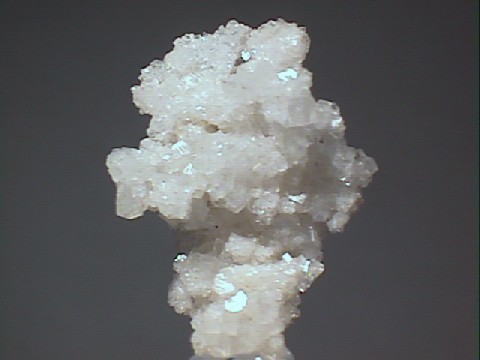 THE MINERAL BERTRANDITE
THE MINERAL BERTRANDITE
- Chemistry: Be4Si2O7(OH)2, Beryllium Silicate Hydroxide.
- Class: Silicates
- Subclass: Sorosilicates
- Uses: An ore of beryllium and as mineral specimens.
- Specimens
Bertrandite was named after Leon Bertrand, a French mineralogist, and is one of the more important ores of beryllium, second only to
beryl.
Bertrandite is closely tied to the
gemstone
mineral beryl in many ways besides its use as an ore for the same metal.
The two are often associated together as bertrandite is an alteration product of beryl.
At times bertrandite is growing on beryl crystals and at other times bertrandite has completely replaced
the beryl crystals forming a pseudomorph.
A pseudomorph is an atom by atom replacement of one mineral for another; replacing the chemistry and structure with a new mineral, but preserving the outward shape of the original crystal.
Pseudomorph mean
false shape.
Bertrandite is found in beryllium bearing pegmatitic rocks and some hydrothermal veins.
PHYSICAL CHARACTERISTICS:
- Color is colorless, white and pale yellow.
- Luster is vitreous to pearly.
- Transparency: Crystals are transparent to translucent.
- Crystal System is orthorhombic; m m 2.
- Crystal Habits include tabular to platy crystals and some prismatic forms.
Often aggregates formed over crystals of beryl.
Twinning is common.
Pseudomorphs of bertrandite after beryl are also common.
- Cleavage good in one direction lengthwise.
- Fracture is uneven to conchoidal.
- Hardness is 6-7.
- Specific Gravity is 3.3-3.5
- Streak is white to gray.
- Other Characteristics: Some specimens have
fluoresced green under UV light.
- Associated Minerals are numerous and include of course
beryl as well as
quartz,
albite,
orthoclase,
fluorapatite,
micas,
anatase,
brookite,
pyrite,
fresnoite,
analcime,
calcite and
cheralite.
- Notable Occurrences include the type locality of Petit-Port and Barbin, Nantes, Loire-Atlantique, France aa well as Akca Tau and Kara-Oba, Kazakhstan; Zabytoe, Primorie, Russia; Spor Mountain and the
Brush Beryllium Mine, Juab County, Utah; Harding Mine, New Mexico;
Texas and Pala District, San Diego County, California, USA; China;
Cornwall, England; Mongolia; Norway and
Mexico.
- Best Field Indicators include only one direction of cleavage, crystal habit, color, association with beryl and hardness.
 THE MINERAL BERTRANDITE
THE MINERAL BERTRANDITE




